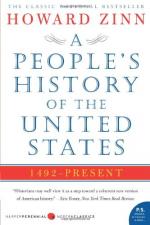
|
| Name: _________________________ | Period: ___________________ |
This test consists of 5 multiple choice questions, 5 short answer questions, and 10 short essay questions.
Multiple Choice Questions
1. The Royal Proclamation of 1763 was issued by whom?
(a) Queen Victoria
(b) King Edward IV
(c) King Charles I
(d) King George III
2. The author notes in Chapter 4 that by 1760, there had been how many uprisings designed to create a coup to overthrown various branches of the colonial governments?
(a) 25
(b) 32
(c) 18
(d) 5
3. The Louisiana Purchase was an acquisition by the United States of lands claimed by France which took place in what year?
(a) 1819
(b) 1698
(c) 1799
(d) 1803
4. When did Christopher Columbus first encounter the Arawak people?
(a) 1502
(b) 1479
(c) 1492
(d) 1499
5. The Seminole people are originally from what current U.S. state?
(a) Massachusetts
(b) Florida
(c) Maine
(d) Louisiana
Short Answer Questions
1. What is the title of Chapter 7?
2. On Columbus’s second voyage for the King and Queen of Spain, he was unable to locate gold so he instead filled his ships with how many slaves?
3. The Indian Removal Act was signed into law by what U.S. President?
4. The author states in Chapter 1 that it is said the source of information of Columbus’s conquests on the islands was written down by a young priest named what?
5. The Anti-Rent War was also known by what name?
Short Essay Questions
1. How does the author describe the beginning of the American Revolutionary War in Chapter 5? How successful were the Americans in the first battles?
2. When and where did Dorr’s Rebellion occur? How does the author describe the surrounding circumstances of this event in Chapter 10?
3. What author spent a night in jail following his protest of the Mexican-American War? Why was he arrested?
4. How do we know the details of Christopher Columbus’s first encounter with the Arawak people? How does the author describe Columbus’s views of the people in Chapter 1?
5. What positive qualities of the establishment of the United States does Zinn discuss in Chapter 4?
6. How does the author compare and contrast the treatment of women to that of the Native Americans in Chapter 7?
7. How does the author describe the uprisings in Kentucky and other colonies in 1760 in Chapter 4?
8. How does the author describe the Sioux puberty ceremony for women in Chapter 6?
9. Why did the English send 1,000 soldiers to Virginia in 1676, according to the author in Chapter 3?
10. What was the first representative assembly introduced in Virginia? What were the responsibilities of this assembly regarding slavery?
|
This section contains 866 words (approx. 3 pages at 300 words per page) |

|




